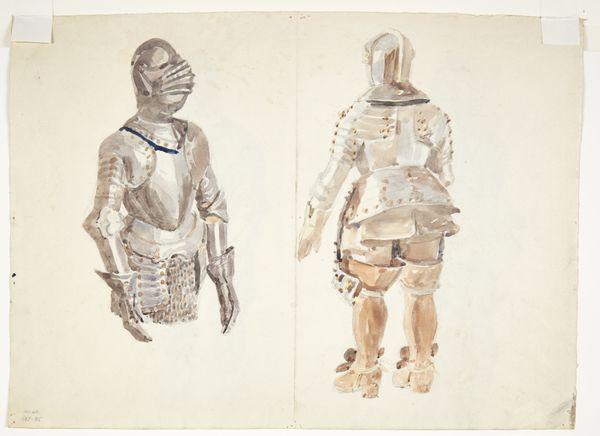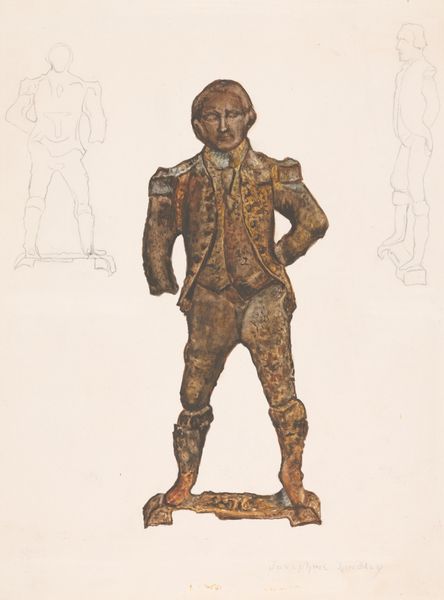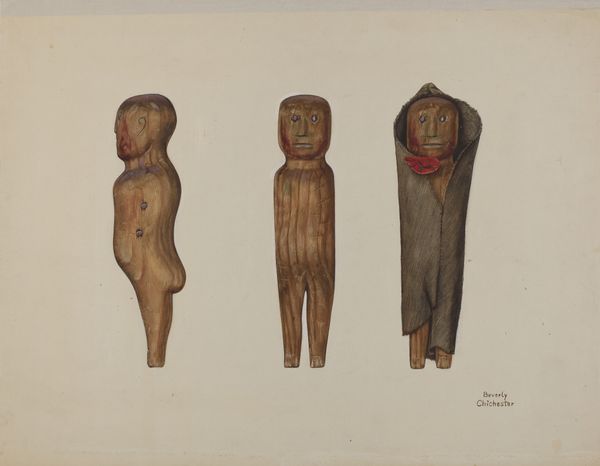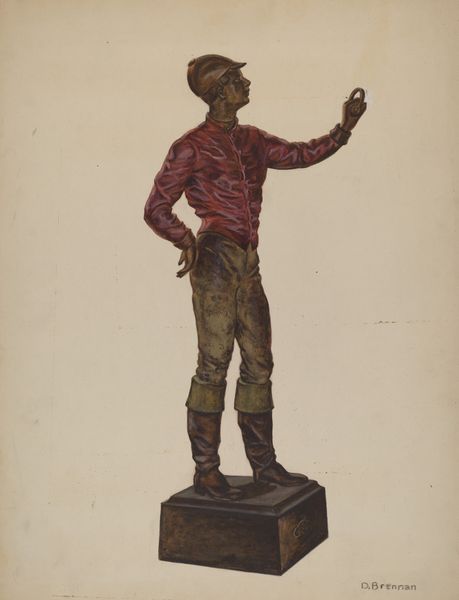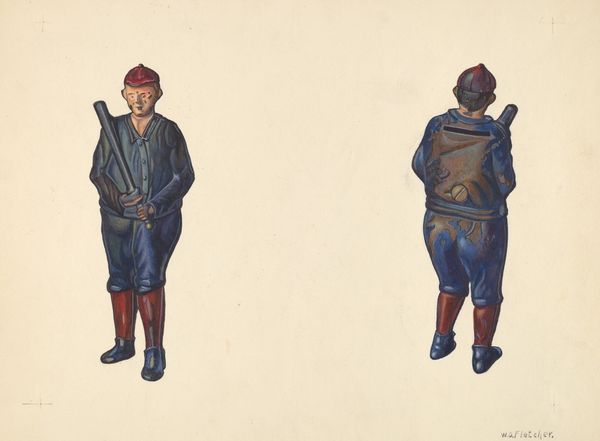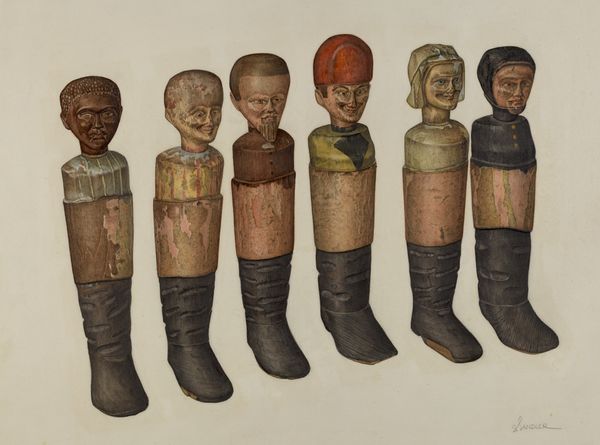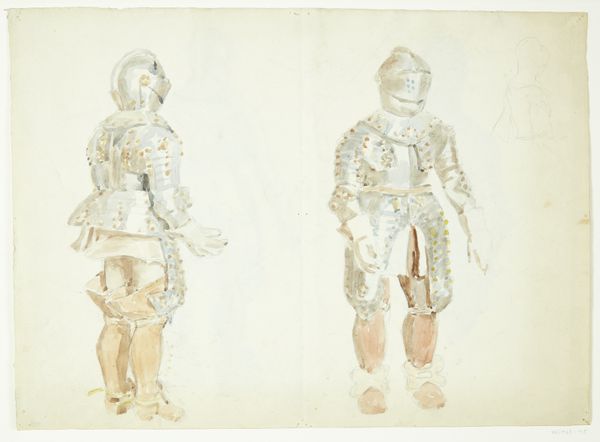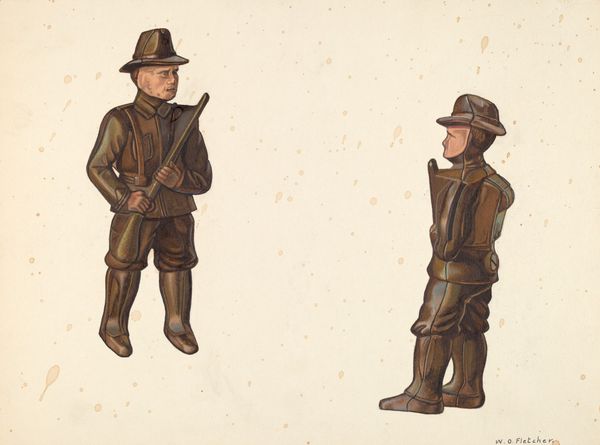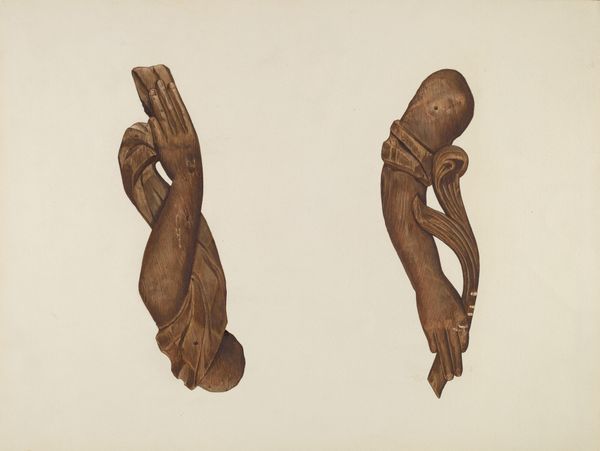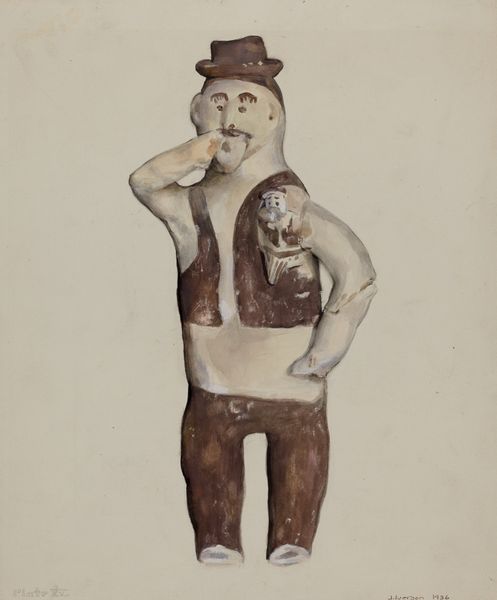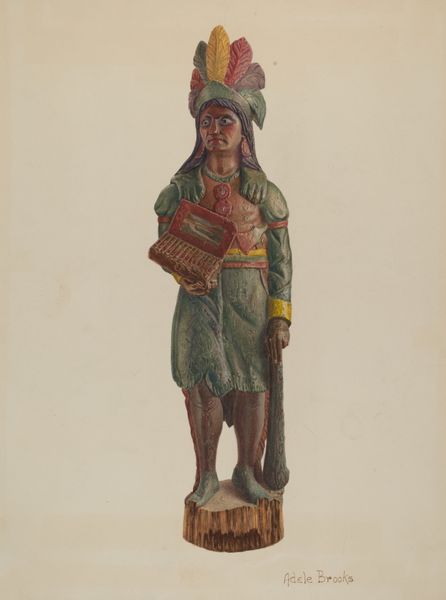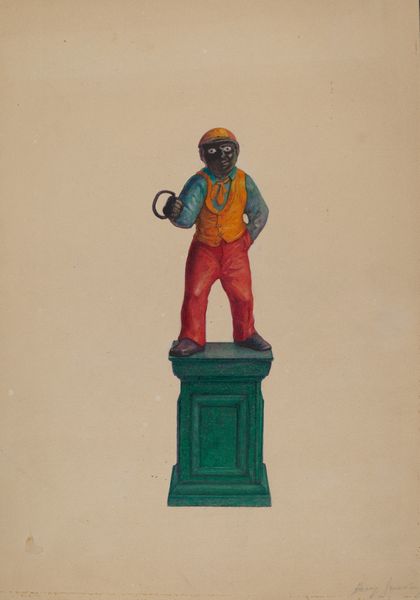
drawing, coloured-pencil, pencil
#
drawing
#
coloured-pencil
#
charcoal drawing
#
figuration
#
coloured pencil
#
pencil
Dimensions: overall: 21.2 x 29.2 cm (8 3/8 x 11 1/2 in.) Original IAD Object: 6" high; 3 1/2" wide
Copyright: National Gallery of Art: CC0 1.0
Curator: Well, this is a disquieting image. The use of color is almost monochromatic. Editor: Indeed, this work, "Indian Chief Coin Bank," likely completed around 1938, presents two views of such an object. It's attributed to William O. Fletcher and appears to be rendered in colored pencil. What reads as disturbing to you? Curator: It's the representation itself, the very idea of casting an Indigenous person as a commercial object, a bank. It feels like a double theft—of land and then of identity. That salute seems particularly loaded. Is it meant as a sign of respect? Or is it more about enforcing submission? Editor: It’s complicated. Consider the era. Images of Native Americans were common in popular culture, but rarely created by Native Americans themselves. There's an undeniable element of appropriation and control, you are right. Curator: The symbol of the salute too... gestures echo, shift in meaning over time. We are trained, visually, by how history tells us what is significant. The angle, color, costume—everything locks into colonial narrative. Editor: Precisely. The composition choices reflect a deliberate construction of the 'Indian' figure, fitting within a long lineage of romanticized, yet dehumanizing, portrayals. Consider the context—this piece would likely have reinforced stereotypical views. Curator: Looking at the back view, with the slot for the coins, the symbolic reduction is blatant. It's not a person; it’s a container, a thing. This little gesture –hand raised as if offering—now becomes about extraction. I wonder how viewers interpret it today. Editor: That's a powerful question, one we must ask of all historical images. This work provides a stark example of how images, seemingly innocuous, carry potent ideological weight and continue to resonate with unsettling implications. Curator: Images can trap, as much as transport us, historically. Understanding their journey through cultural shifts is what makes the artwork so important to reflect on, no matter how unsettling it can feel at times. Editor: I concur entirely, grappling with uncomfortable historical representations are essential in dissecting systems that gave them credence to begin with. That reflective approach provides potential avenues towards dismantling those inequities as they persist into contemporary life.
Comments
No comments
Be the first to comment and join the conversation on the ultimate creative platform.
